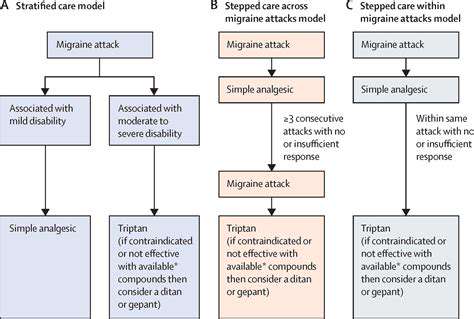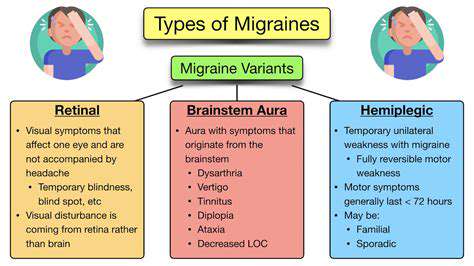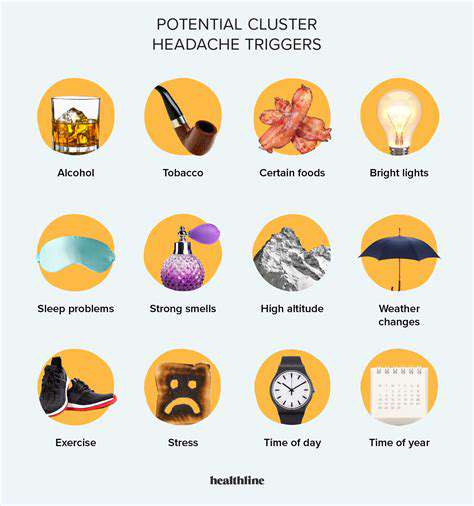CGRP Inhibitors: A New Era in Migraine Prevention
Beyond Prevention: Addressing the Burden of Migraine
Understanding the Impact of Migraine
Migraine isn't merely about the excruciating pain; it profoundly disrupts daily life. Chronic migraine sufferers frequently face significant hurdles in maintaining employment, attending social gatherings, or even completing routine chores. The relentless throbbing, nausea, and heightened sensitivity to light and sound often create an isolating experience, straining personal relationships and diminishing overall quality of life. Beyond the immediate physical distress, the long-term effects can be severe, leading to reduced work output, escalating medical expenses, and potential mental health challenges.
The global impact of migraine is staggering. With millions affected worldwide, the condition imposes substantial healthcare costs and productivity losses that ripple through economies. Tackling this burden demands a comprehensive strategy that extends beyond attack prevention. Recognizing the intricate web of contributing factors—including genetic susceptibility, environmental triggers, and psychological stressors—is vital for developing sustainable solutions for both prevention and treatment.
Exploring CGRP Inhibitors in a Comprehensive Approach
CGRP inhibitors mark a groundbreaking development in migraine therapy. These drugs specifically target CGRP, a neuropeptide central to migraine-related inflammation. By blocking CGRP activity, they effectively decrease attack frequency, severity, and duration. This precision-targeted mechanism enables more efficient condition management, addressing not just prevention but also the debilitating symptoms that disrupt patients' lives.
One standout benefit of CGRP inhibitors is their potential for holistic migraine care. Compared to traditional treatments, they typically demonstrate excellent tolerability with minimal side effects. This favorable safety profile promotes treatment adherence, yielding better results and enhanced overall health outcomes. The sustained benefits significantly improve quality of life for migraine sufferers, making these medications a game-changer in neurological care.
Beyond pain reduction, CGRP inhibitors show promise in mitigating migraine's broader life impact. By decreasing attack occurrence and intensity, they facilitate greater work productivity, social engagement, and general well-being. This comprehensive treatment philosophy represents a major advancement in tackling migraine's complex challenges.
The Future of Migraine Management

Technological Advancements in Diagnostics
Emerging technologies are transforming migraine diagnosis, moving beyond subjective patient reports. Cutting-edge imaging methods like functional MRI and magnetoencephalography (MEG) reveal migraine-associated brain activity patterns, enabling earlier, more precise diagnoses. This neurological insight could facilitate customized treatment plans based on individual brain responses.
Additionally, wearable devices and health apps now gather continuous data on symptoms, environmental factors, and lifestyle patterns. This wealth of real-time information provides unprecedented understanding of migraine triggers and trends, allowing preemptive action to potentially avert attacks. The synergy of these technologies promises a new era of precision in migraine care.
Personalized Treatment Strategies
The migraine treatment landscape is shifting from standardized protocols to truly individualized plans. Genetic profiling can identify personal migraine predispositions, enabling clinicians to customize therapies based on specific genetic markers. This tailored approach ensures optimal treatment alignment with each patient's unique biological makeup.
Furthermore, enhanced understanding of neurotransmitter interactions and brain chemistry is driving development of precisely targeted medications. This pharmacological precision minimizes adverse effects while maximizing therapeutic benefits, creating superior treatment experiences. Such personalized medicine represents a quantum leap in improving patient outcomes.
Non-Pharmacological Interventions
Complementary therapies are gaining substantial recognition in migraine management. These drug-free approaches, easily incorporated into daily routines, provide valuable options for symptom prevention and control through lifestyle adjustments.
Mindfulness practices including meditation and yoga demonstrate remarkable efficacy in reducing migraine occurrence and severity. Biofeedback and relaxation techniques also prove effective for managing stress and muscle tension—common migraine triggers. These adjunctive therapies empower patients to actively participate in their own care while complementing traditional medical treatments.
Integration of Interdisciplinary Approaches
Future migraine care will increasingly rely on collaborative, multidisciplinary models. Coordinated teams combining neurologists, pain specialists, psychologists, and other experts can address migraine's complex nature more comprehensively.
This cooperative framework enables holistic patient assessment, targeting not just physical symptoms but also psychological and lifestyle factors influencing migraine patterns. Such integrated care promises more supportive and effective long-term management strategies.
The Role of Artificial Intelligence
AI stands poised to revolutionize migraine care through enhanced diagnostics and personalized treatment planning. Sophisticated algorithms can process vast datasets including medical histories, symptom patterns, and environmental factors to identify triggers and predict attacks with unprecedented accuracy.
AI diagnostic tools may detect subtle symptom correlations overlooked by conventional methods. This predictive capability enables proactive interventions, potentially reducing both migraine frequency and intensity. Such technological advances could dramatically improve patient outcomes.
Improving Patient Education and Support
Enhanced patient education and support networks will form a cornerstone of future migraine management. Clear, accessible information about the condition, treatment options, and potential triggers empowers patients to engage actively in their care.
Online communities and resources create valuable connections among patients, fostering mutual understanding and collective support. These networks help individuals navigate migraine complexities with greater confidence and resilience. Strengthened education and support systems are essential for sustainable, effective long-term management.











